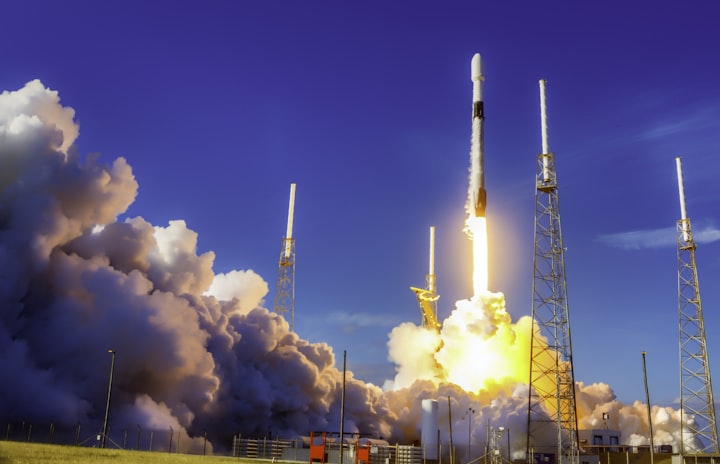THE MISSILE MAN OF INDIA
DR.A.P.J ABDUL KALAM


DR. ABDUL KALAM EARLY LIFE AND EDUCATION:
Avul Pakir Jainulabdeen Abdul Kalam, popularly known as A.P.J. Abdul Kalam, was born on October 15, 1931, in Rameswaram, a small island town in Tamil Nadu, India. His father, Jainulabdeen, was a boat owner and his mother, Ashiamma, was a homemaker.
Kalam's family was not wealthy, and he grew up in a simple environment. Despite financial constraints, his parents encouraged him and his siblings to pursue education. Kalam was an average student, but he had a deep interest in science and mathematics.
After completing his schooling from Schwartz High School in Ramanathapuram, Kalam went on to study physics at St. Joseph's College in Tiruchirappalli. Later, he moved to Madras (now Chennai) and graduated in physics from the University of Madras in 1954.
Kalam then went on to study aerospace engineering at the Madras Institute of Technology (MIT), where he completed his Master's degree in 1957. During his time at MIT, Kalam was exposed to the works of famous scientists and thinkers such as Sir C.V. Raman and Dr. Vikram Sarabhai, which greatly influenced his thinking.

After completing his studies, Kalam joined the Defense Research and Development Organization (DRDO) as a scientist in 1958, beginning his career in aerospace engineering and missile technology. His early life and education laid the foundation for his successful career as a scientist and leader, and he went on to become one of the most respected figures in Indian science and politics.
CARRIER AS A SCIENTIST:
A.P.J. Abdul Kalam had a successful career as a scientist, and he was known as the "Missile Man of India" for his contributions to missile technology. He joined the Defense Research and Development Organization (DRDO) in 1958 as a scientist and worked on several important projects during his tenure.
One of Kalam's most significant contributions to science was his work on the development of the Agni and Prithvi missiles. He played a key role in the development of the Agni missile, which is capable of carrying a nuclear warhead, and the Prithvi missile, which is a surface-to-surface missile with a range of up to 350 km. Kalam's work on missile technology earned him widespread recognition, and he was awarded the Padma Bhushan and Padma Vibhushan awards by the Government of India for his contributions to the field of science and technology.

In addition to his work on missile technology, Kalam was also involved in the development of India's first satellite launch vehicle, SLV-III. He served as the project director for the SLV-III, which successfully placed the Rohini satellite into orbit in 1983.
Kalam's scientific achievements were not limited to missile technology and space research. He was also involved in the development of the Kalam-Raju Stent, a low-cost coronary stent that was designed to make heart surgeries more affordable for patients in India.
Overall, Kalam's career as a scientist spanned several decades, and he made significant contributions to the fields of missile technology, space research, and healthcare. His legacy as a scientist and leader continues to inspire generations of young people in India and around the world.
DR. KALAM PRESIDENCY:
In 2002, A.P.J. Abdul Kalam was elected as the 11th President of India, succeeding K.R. Narayanan. He was widely respected for his humility, simplicity, and down-to-earth personality, and his presidency was marked by his efforts to promote education, science, and technology.
As President, Kalam traveled extensively throughout India, visiting schools, colleges, and universities, and interacting with students and young people. He was passionate about encouraging young people to pursue science and technology and believed that education was the key to unlocking India's potential.
Kalam was also known for his efforts to promote national unity and integration. He believed that India's diversity was its strength and that people of all religions and backgrounds should work together to build a stronger and more prosperous nation.
During his presidency, Kalam also initiated several programs aimed at promoting sustainable development, such as the PURA (Providing Urban Amenities in Rural Areas) program, which aimed to provide basic amenities and infrastructure to rural areas.
Kalam's presidency came to an end in 2007, and he returned to a life of writing, teaching, and public speaking. However, his legacy as a President who was loved and respected by people from all walks of life continues to inspire generations of Indians.

DEATH:
A.P.J. Abdul Kalam passed away on July 27, 2015, while delivering a lecture at the Indian Institute of Management (IIM) Shillong. He collapsed during the lecture and was rushed to the nearby Bethany Hospital, where he was pronounced dead due to a cardiac arrest.

The news of Kalam's death sent shockwaves throughout India, and thousands of people, including top political leaders and dignitaries, attended his funeral in Rameswaram. Kalam was widely mourned by people from all walks of life, and his death was seen as a great loss to the nation.
Kalam's legacy, however, continues to inspire people in India and around the world. His life and achievements continue to serve as a source of motivation for young people, especially those interested in science and technology. The Indian government has also established several initiatives and programs in his memory, such as the APJ Abdul Kalam Memorial Museum and the Kalam Fellowship for Young Scientists.






Comments
There are no comments for this story
Be the first to respond and start the conversation.